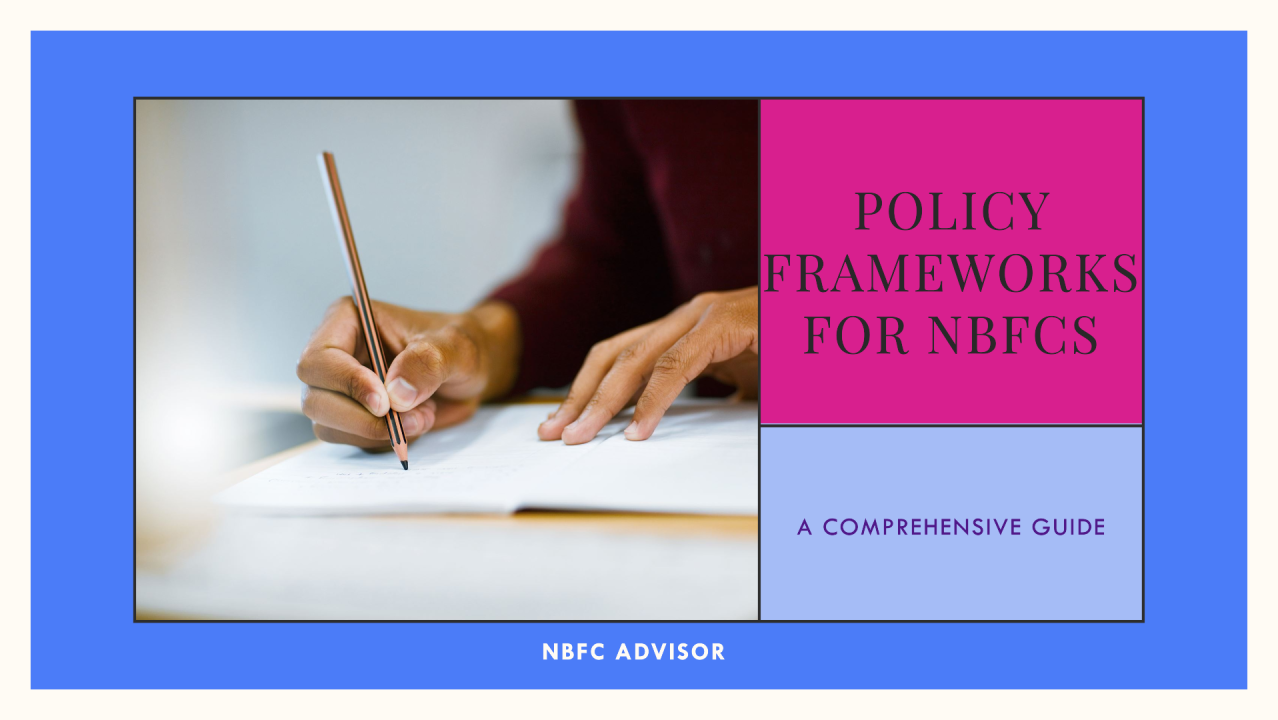
In an evolving regulatory landscape, NBFCs must develop comprehensive policies to ensure compliance, manage risks, and uphold governance standards. Key policy frameworks are crucial for Base and Middle Layer NBFCs, emphasizing operational efficiency and regulatory adherence. NBFC Advisor specializes in crafting these essential policies to promote sustainable growth.
📌 Base Layer Policies
NBFCs in the Base Layer must establish foundational policies that cover a wide range of operations. These policies are essential for maintaining a solid operational base and ensuring compliance with regulatory standards:
- Investment Policy: Guidelines on how investments should be managed to optimize returns while minimizing risk.
- Fair Practice Code: Ensures transparency and fairness in dealings with customers.
- Policy for Credit/Investment Concentration Limits: Sets limits to avoid excessive exposure to single entities or sectors.
- Policy on Grant of Loans to Directors, Senior Officers, and Their Relatives: Prevents conflicts of interest by regulating internal loans.
- KYC Policy: Outlines procedures for customer verification to prevent fraud and money laundering.
- Non-Cooperative Borrowers Policy: Defines how to handle borrowers who are uncooperative or default on loans.
- Policy on Protection of Credit Information of Customers: Ensures the confidentiality and security of customer credit information.
- Policy on Reset of Floating Interest Rate on EMIs: Manages adjustments in interest rates for floating-rate loans.
- Policy for Levy of Penal Charges: Sets guidelines for imposing penalties on late payments.
- Grievance Redressal Policy: Provides a framework for addressing customer complaints effectively.
- Interest Rate Policy: Establishes the basis for setting interest rates on loans and advances.
📌 Middle Layer Policies
NBFCs in the Middle Layer must implement additional policies to address more complex operational and governance challenges. These policies build on the foundational ones, adding layers of oversight and risk management:
- Risk Management Policy: Comprehensive strategy for identifying, assessing, and mitigating risks.
- Corporate Governance Policy: Ensures adherence to governance standards and ethical practices.
- Policy for Fit and Proper Criteria: Establishes criteria for the appointment of key personnel to ensure competence and integrity.
- ICAAP Policy: Internal Capital Adequacy Assessment Process to ensure sufficient capital to cover risks.
- Compliance Policy: Framework to ensure adherence to all regulatory requirements.
- Compensation Policy: Guidelines for fair and performance-based employee compensation.
- Information Technology Policy: Governs the use of IT resources to ensure efficiency and security.
- Information Security Policy: Protects data integrity, confidentiality, and availability.
- Cyber Security Policy: Specific measures to guard against cyber threats.
- Change Management Policy: Procedures for managing organizational changes effectively.
- Policy for Information System Audit: Regular audits to ensure IT systems are secure and efficient.
- Business Continuity Planning and Disaster Recovery Policy: Ensures operational resilience in the face of disruptions.
- Asset Classification and Provisioning Policy: Guidelines for classifying assets and making provisions for potential losses.
- Related Party Transaction Policy: Manages transactions with related parties to prevent conflicts of interest.
- Policy on Appointment of Auditors: Criteria and process for selecting auditors.
- IT Services Outsourcing Policy (if applicable): Guidelines for outsourcing IT services to third parties.
NBFCs in the Middle Layer must also comply with all Base Layer policies, ensuring a comprehensive approach to governance and risk management.
📌 Event-Based Policies
Certain policies are triggered by specific events or operational thresholds, providing additional layers of control and governance:
- Co-Lending Policy: Guidelines for co-lending arrangements with other financial institutions.
- Liquidity Risk Management Policy (for asset size above ₹100 crores): Ensures sufficient liquidity to meet obligations.
- Policy for Transfer and Acquisition of Loan Exposures: Governs the transfer and acquisition of loan portfolios.
- Policy for Securitisation: Framework for securitizing loan assets.
- Outsourcing Policy: Guidelines for outsourcing business functions to third parties.
- Code of Conduct for DSA/DMA/Recovery Agents: Standards for direct selling agents, direct marketing agents, and recovery agents.
- Policy on Resource Planning: Ensures efficient allocation and use of resources.
- Policy on Compromise, Settlement, and Technical Write-Offs: Manages compromised settlements and write-offs.
- ECL Policy (for asset size above ₹250 crores): Expected Credit Loss policy for estimating credit losses.
- Demand/Call Loan Policy: Guidelines for demand and call loans.
- Restructuring Policy: Framework for restructuring loans.
- Loan/Credit Policy: Comprehensive guidelines for granting loans and credit.
Partner with NBFC Advisor
At NBFC Advisor, we specialize in helping NBFCs craft these essential policies to comply with regulatory mandates, optimize operational efficiency, and enhance risk management frameworks. Our expertise ensures your NBFC is well-prepared to meet regulatory requirements and navigate the complexities of today’s financial landscape.
Connect with us to ensure your NBFC is equipped with robust policies for compliance and risk management, positioning you for sustainable growth and success.
